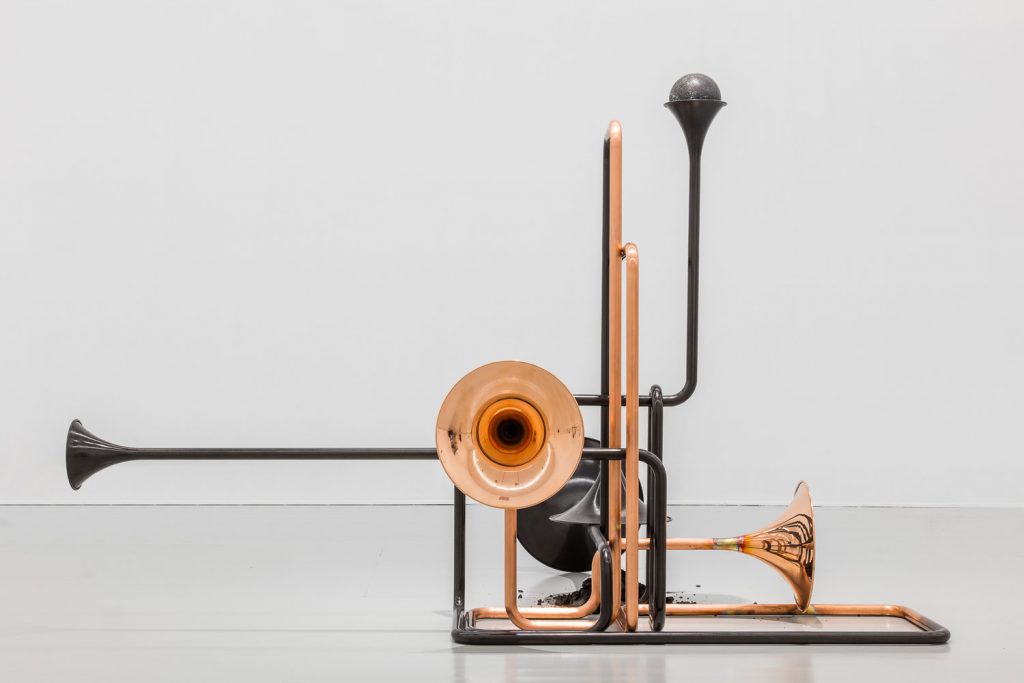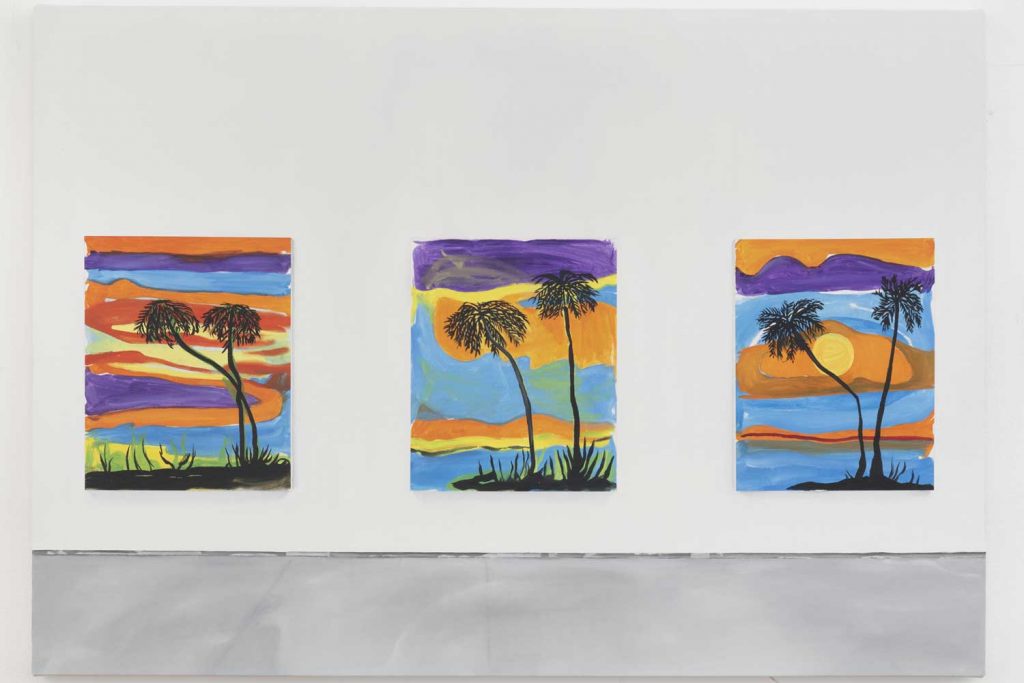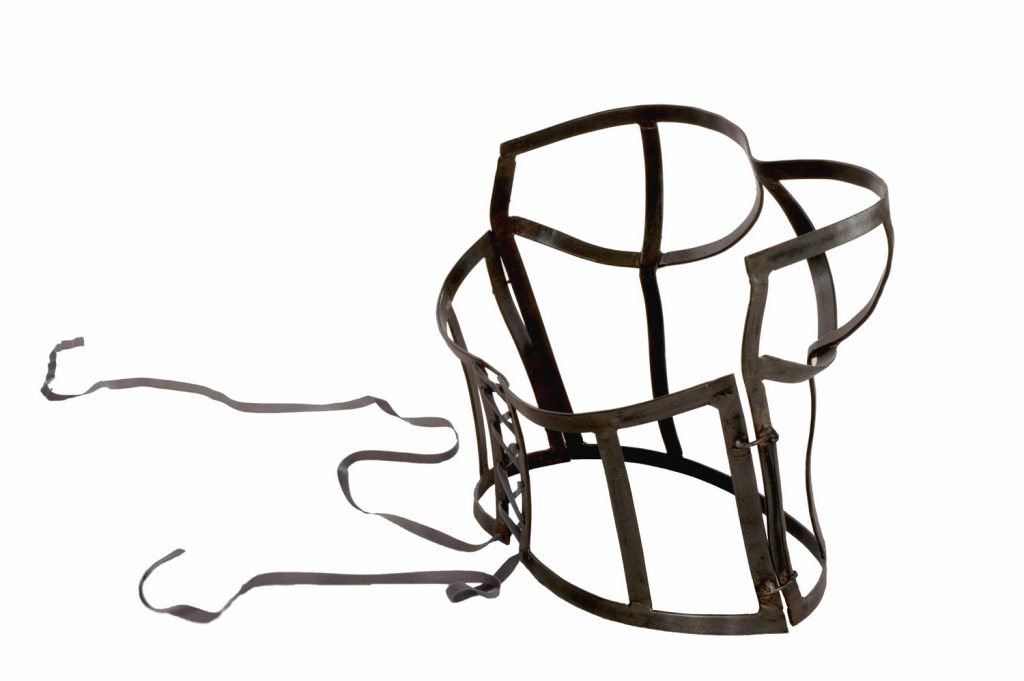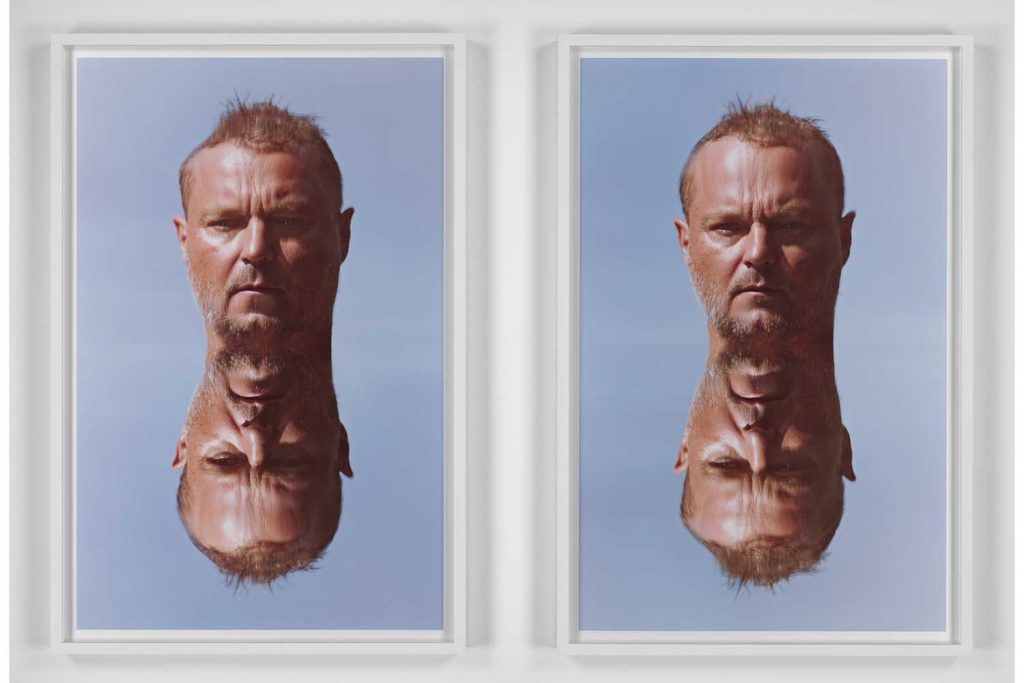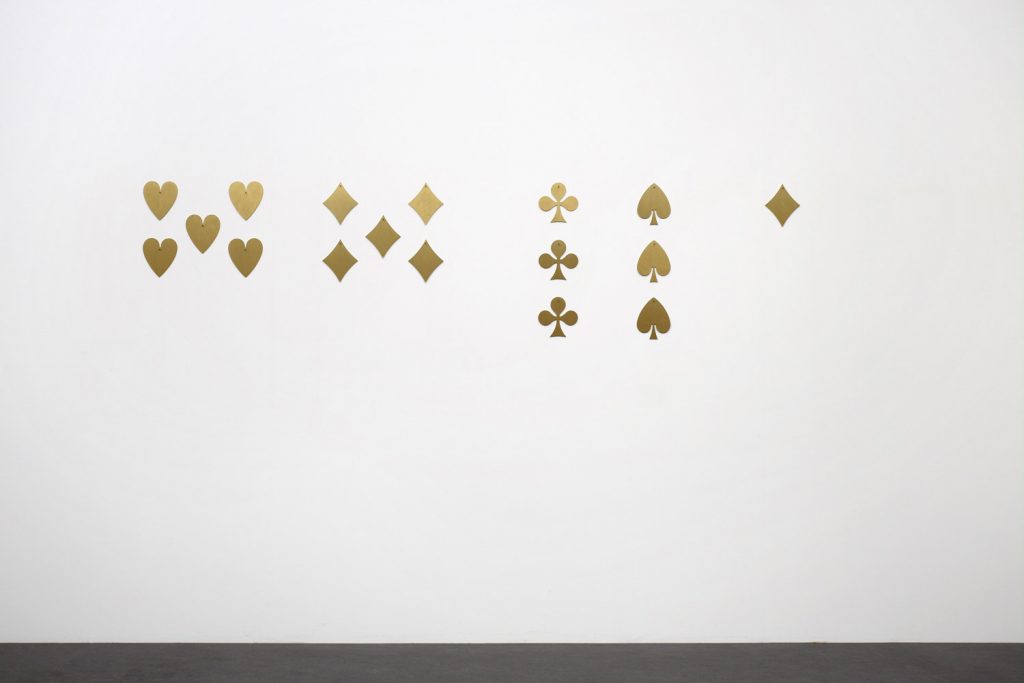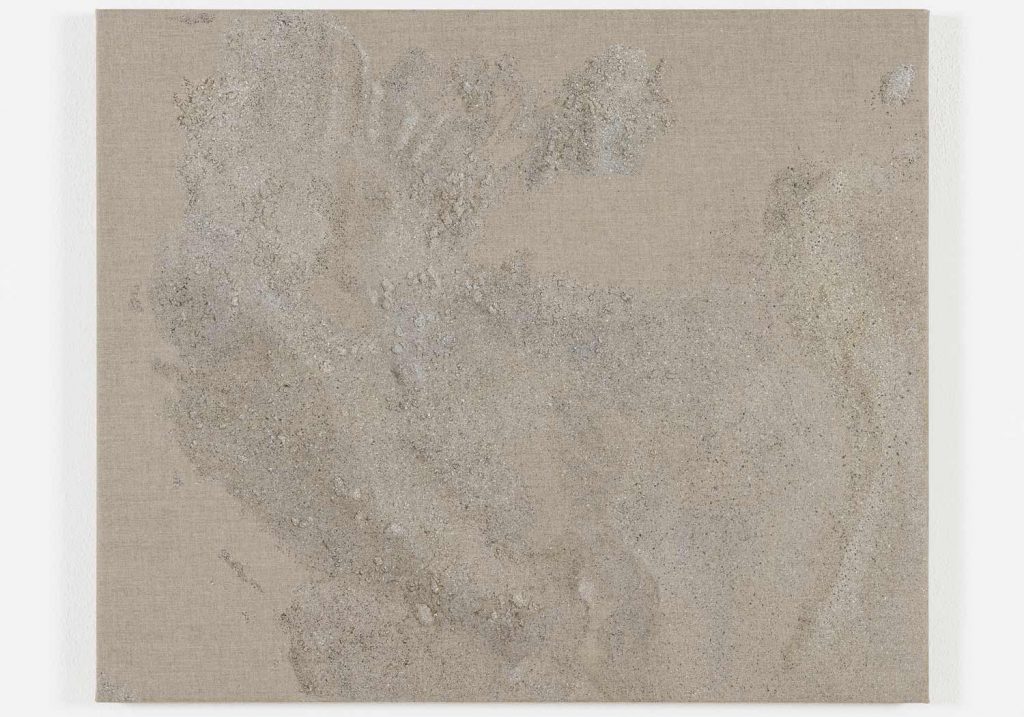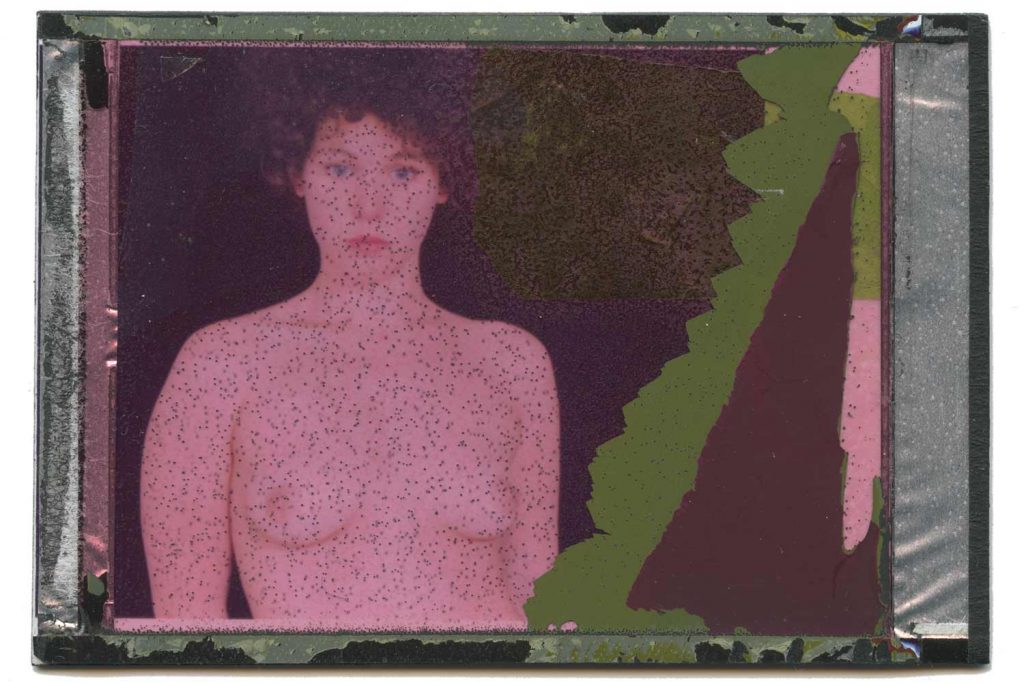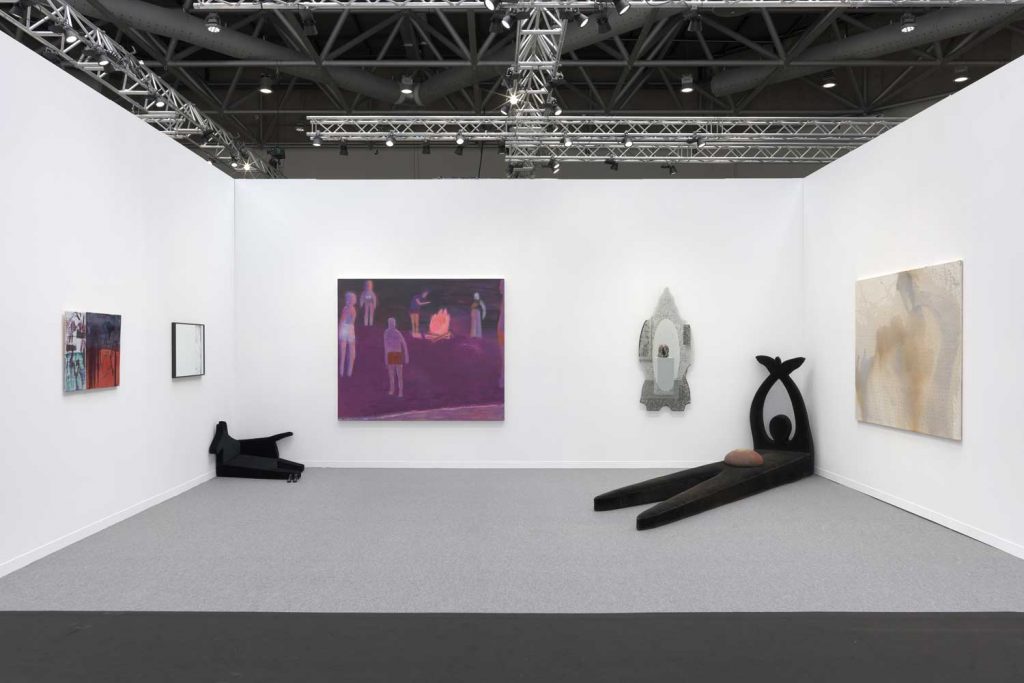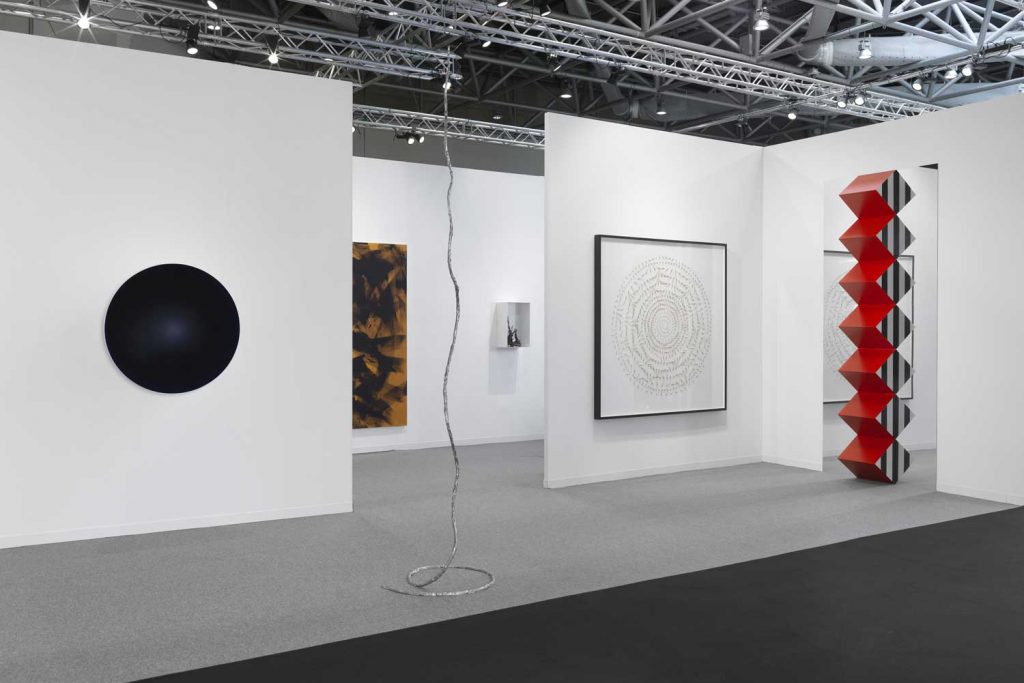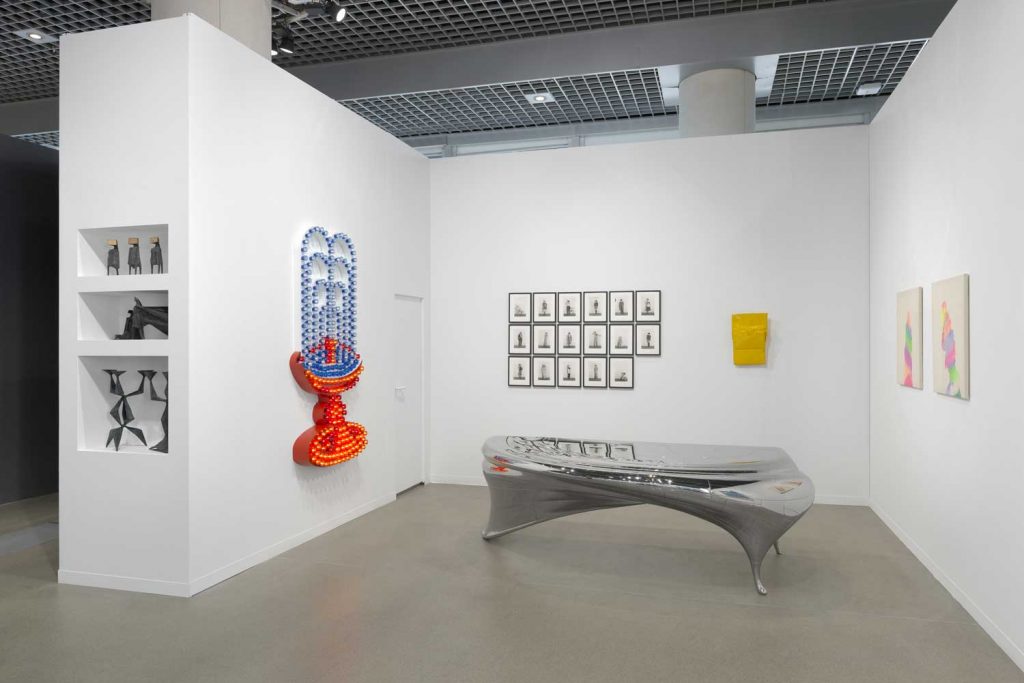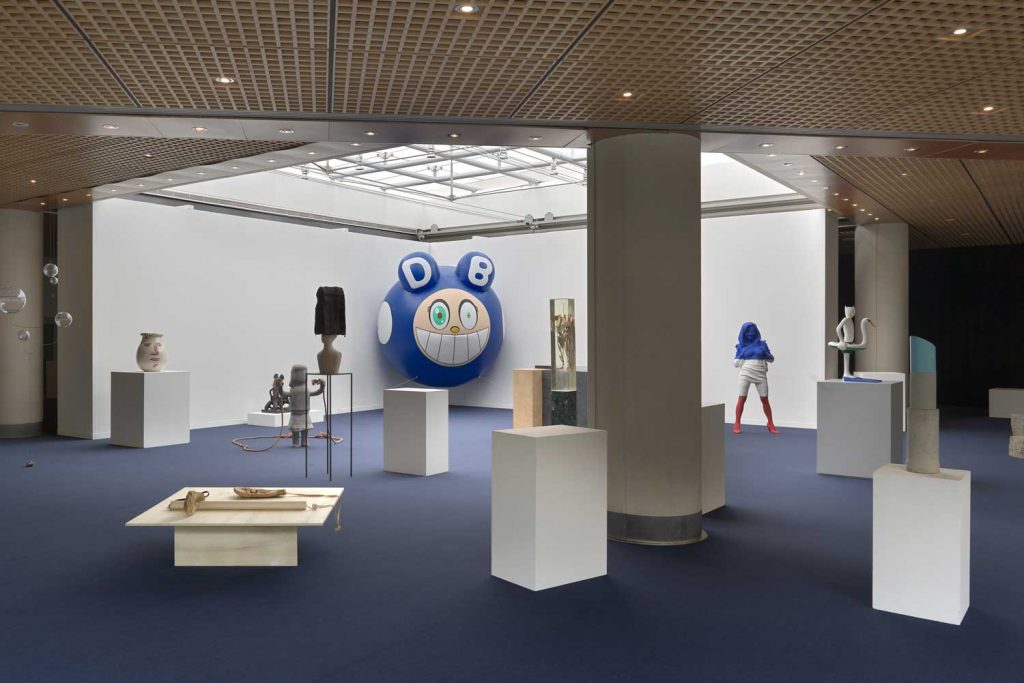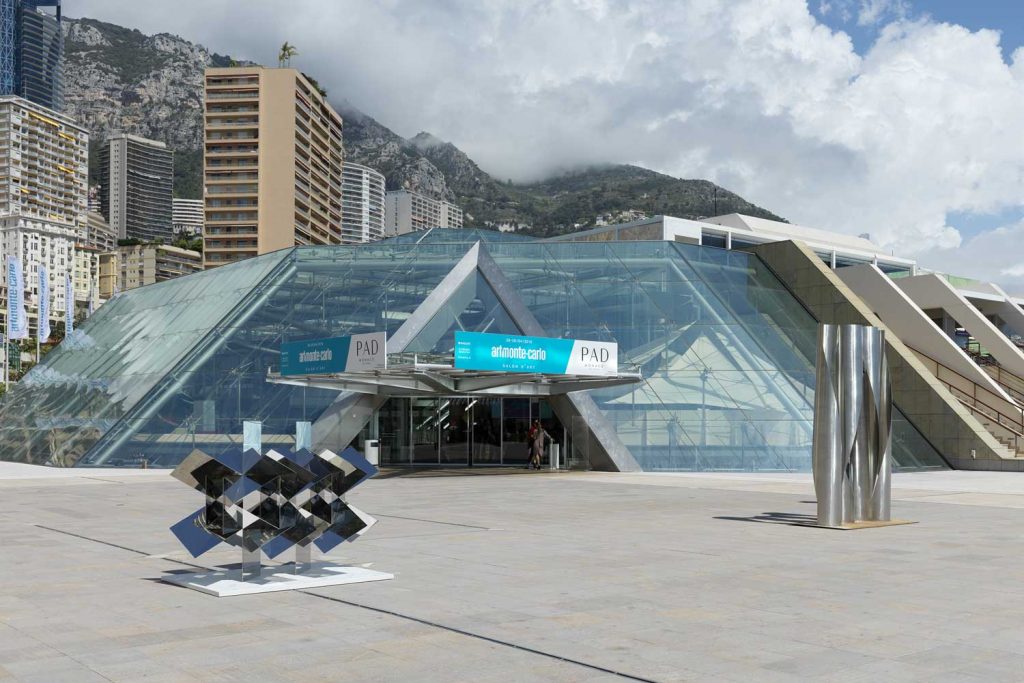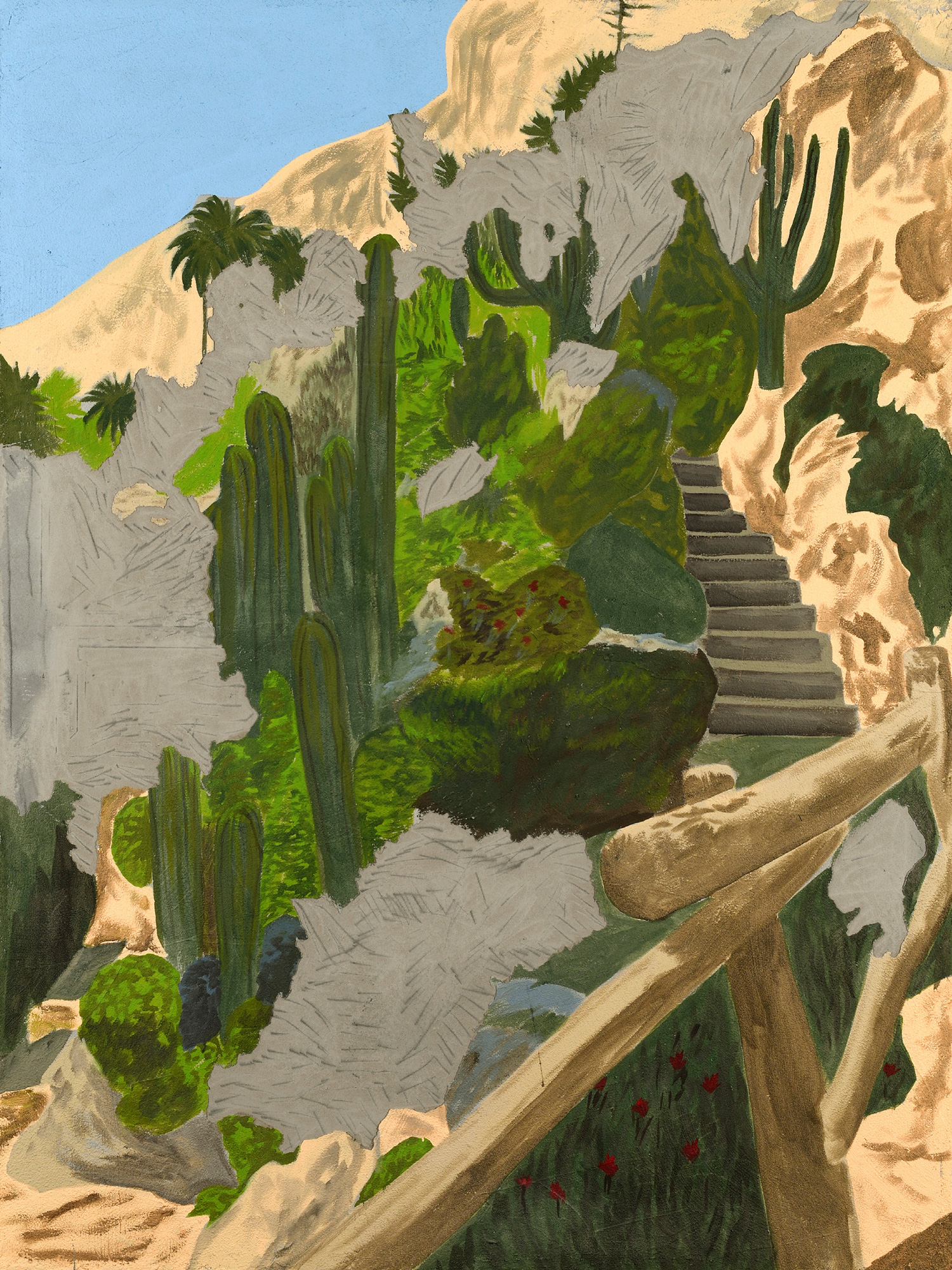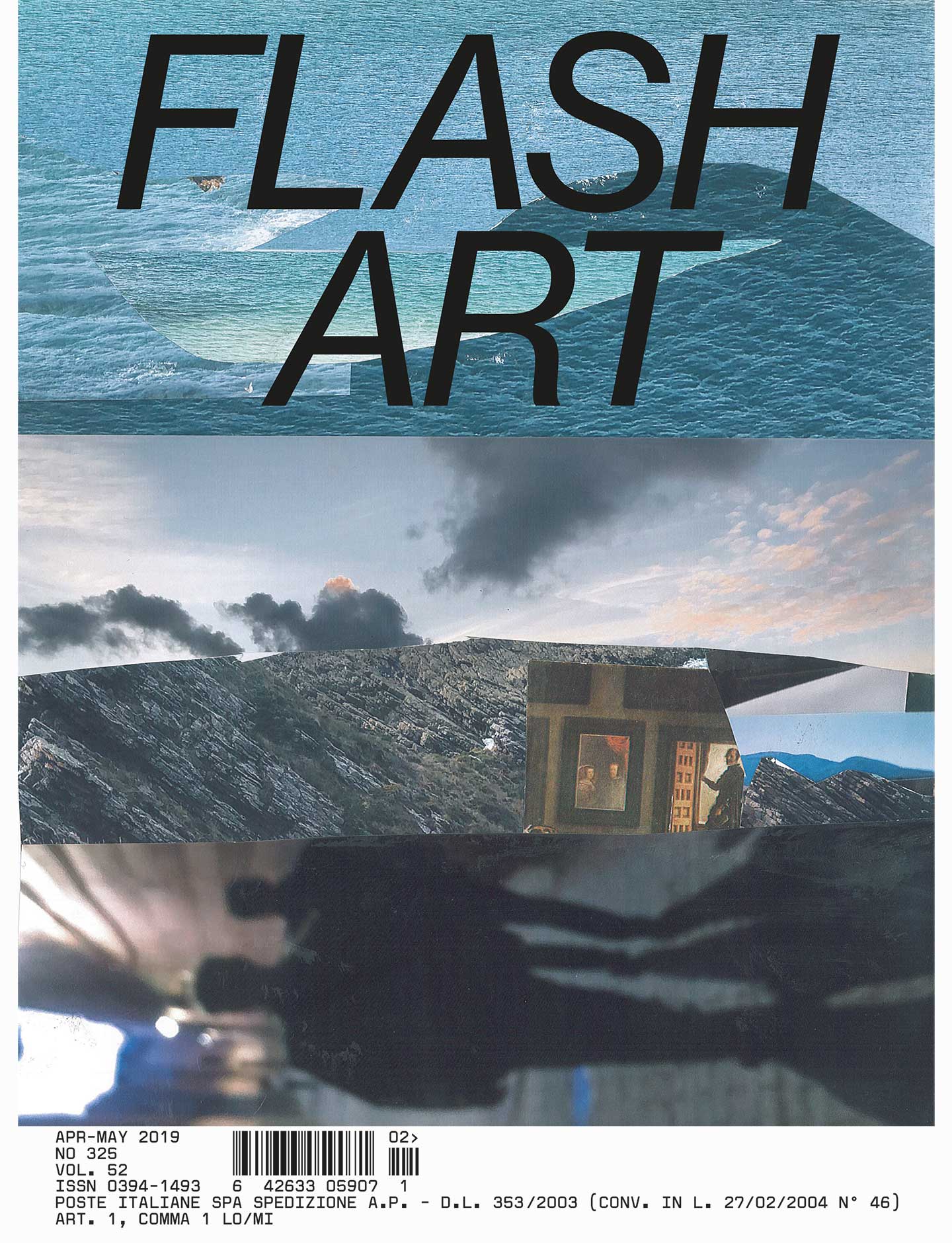As we approached the center of Monaco, the driver who picked me up at the airport pointed out one of the largest yachts in the world, dwarfing all its companions lining the main harbor. We had plenty of time to admire it, since annual roadwork in advance of the Grand Prix de Monaco — the legendary Formula One car race that takes over the city-state each May — meant that it took us a good forty minutes to drive across what is apparently the second smallest country in the world after the Vatican. What brought me there was the less-hyped artmonte-carlo fair, the twin of Geneva’s own select salon d’art, also directed by Thomas Hug. We reached our destination in time for me to catch the tail end of a cocktail reception at Villa Sauber — one of two exhibition venues that make up the NMNM (Nouveau Musée National de Monaco) — for the opening of their new exhibition “Step by Step,” showcasing the private collection of art dealer Fabrizio Moretti. “Pain is what all these works have in common,” the collector confided on a rapid tour of the ground-floor galleries, drawing my attention to two Baroque masterpieces by Guido Reni and Guido Cagnacci, both depicting the tragic figure of Lucretia. In contrast, the upper-level exhibition spaces brought together an eclectic but fine selection of contemporary art, including some wonderful works by Luc Tuymans, George Condo, and Bruno Munari. Cristiano Raimondi, who curated the show, barely made it to his own opening; he had been detained by juror duties for the F. P. Journe prize, which went to Milan-based artist Cinzia Ruggeri — represented by Galleria Federico Vavassori — for the best solo presentation in the small, newly introduced section of booths exhibiting works by a single artist. He had a stake in it, admittedly, since a work by the award-winning artist purchased by the watchmaker F. P. Journe, one of the main sponsors of the fair, will end up in the NMNM collection. Speaking at a symposium titled “Imagining the Future: Contemporary Art Prizes in the 21st Century” the following day, the chairman of the now decade-old Prix Pictet for photography, Stephen Barber, noted that “not enough fuss was made over the winner” at the F. P. Journe prize announcement in his opinion. Whether artists actually desired that a fuss be made was questioned by his fellow panelists Bjorn Geldhof and Joan Young, representing the PinchukArtCentre’s Future Generations and the Guggenheim’s Hugo Boss art prizes respectively, in the animated discussion that followed the presentations. This and other art talks were held in a dedicated area of the Grimaldi Forum, right above the forty-odd gallery booths in the main section of what prides itself on being a human-scale art fair. New York–based dealer Cristiano Alexa from 303 Gallery, one of the newcomers at this year’s artmonte-carlo, commended the “beautiful slow pace” of this “jewel fair.” “Business here works in mysterious ways; people take more time for exchange,” he said. His gallery chose to focus on one artist, Alicja Kwade, exhibiting delicate works on paper alongside more stark geometrical sculptures. P420 gallery’s elegant presentation of works by Irma Blank, Riccardo Baruzzi, Paolo Icaro, as well as Adelaide Cioni’s attractive fabric-on-canvas pieces, was among my favorites in the main section of the fair, as was Fabienne Leclerc’s booth in which another textile work by the Nigerian-born artist Otobong Nkanga took pride of place beside a stuffed, immaculately white bird resting on a heap of jewelry and other bric-a-brac in a sculptural piece by Mark Dion.
An installation by the artist is on permanent display at Monaco’s outstanding Oceanographic Museum, left over from his 2011 “Oceanomania” exhibition staged amid the museum collections. Featured among the ten solo presentations grouped together in a separate part of the fair, Zoe Williams’s ceramic works could be seen again that evening at the Riva Tunnel, mounted onto a long table heaped with vegetables, fruits, herbs, sweets, and other foodstuffs. These became so many props for a female-only cast of scantily dressed performers who gorged themselves on food, stuffed it down their corsets, and engaged in titillating food fights under the watchful eyes of the artist, in a durational performance that reminded me of Czech director Vêra Chytilová’s 1966 cult film Daisies. Judging by the reactions around me, it went down quite well with the male contingent in the audience. The next day began with the somewhat more tame gallery breakfast at the Grimaldi Forum, followed by the well-attended launch of a new nonprofit association founded by art patron and collector Silvia Fiorucci-Roman, who decided to open up her homes in Monaco, Grasse, Rome, the Dodecanese island of Kastellorizo, and a boat to resident artists, curators, and researchers. Sporting black and yellow outfits as befits members of the wonderfully named Società delle Api (The Bee Society), Cristiano Raimondi, editor Lorenzo Micheli Gigotti, and associate artists Chiara Camoni and Angelo Plessas extolled in turn the virtues of solidarity, mutual support, and cross-pollination on which the society rests. The afternoon’s highlight was an outing to Eileen Gray’s beloved modernist villa E-1027 in nearby Roquebrune-Cap-Martin, included in the Criss-Cross program aimed at “art world professionals.” Thirty of them had been invited to Monaco for the weekend from all over Europe, all expenses paid. All they had to do in return was cross-pollinate among themselves by setting up as many (or as few) meetings with their peers as they felt inclined to do. This was my third visit to E-1027 in as many years, and each time I found it had changed owing to the progressive and fiendishly complicated nature of the restoration work, which is now nearing completion. By the time we got back, the evening’s performance by the Ballets de Monte-Carlo, which I had been looking forward to all weekend, was about to start. A double bill featuring choreographies by Jean-Christophe Maillot and Goyo Montero, CORPUS turned out to be an uneven show. I emerged from the packed theater auditorium in the inner recesses of the Grimaldi Forum and made it straight for the artmonte-carlo gala dinner, which was already in full swing. Dinner tables had been set up between the gallery stands, which made for a novel though hardly glamorous experience. For that you had your pick of casinos and luxury hotel bars to choose from; failing that, the artmonte-carlo party at Jimmy’z, which trades on its reputation as one of the French Riviera’s mythical clubs.

